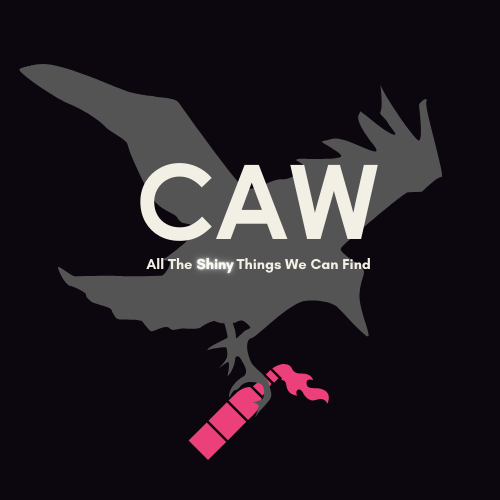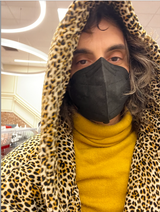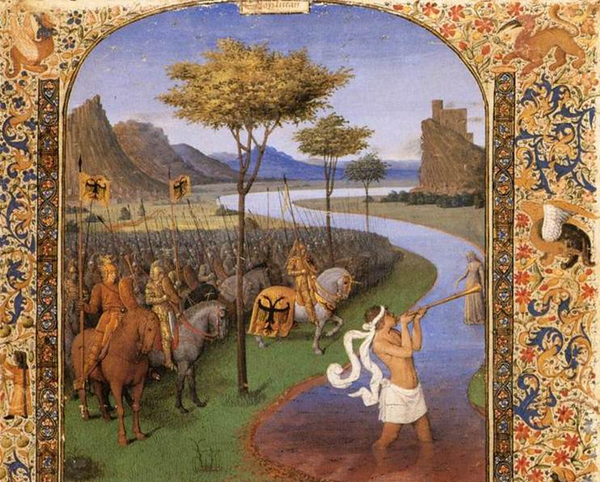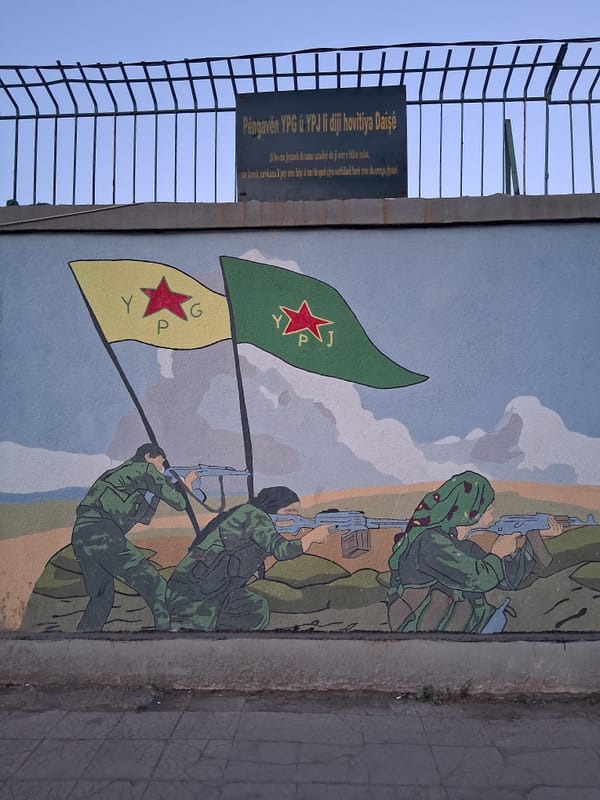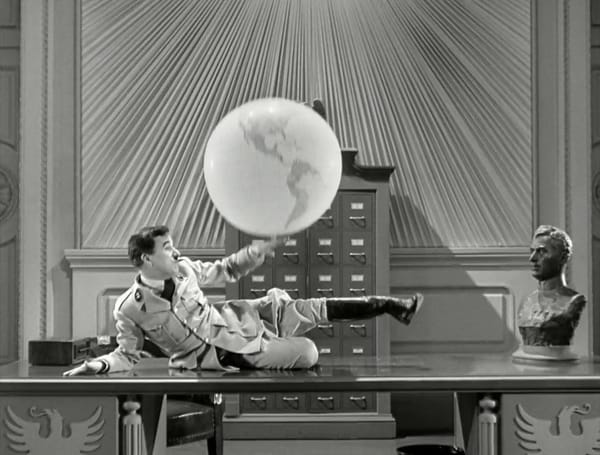SWITCHPOINTS, or jumping timelines
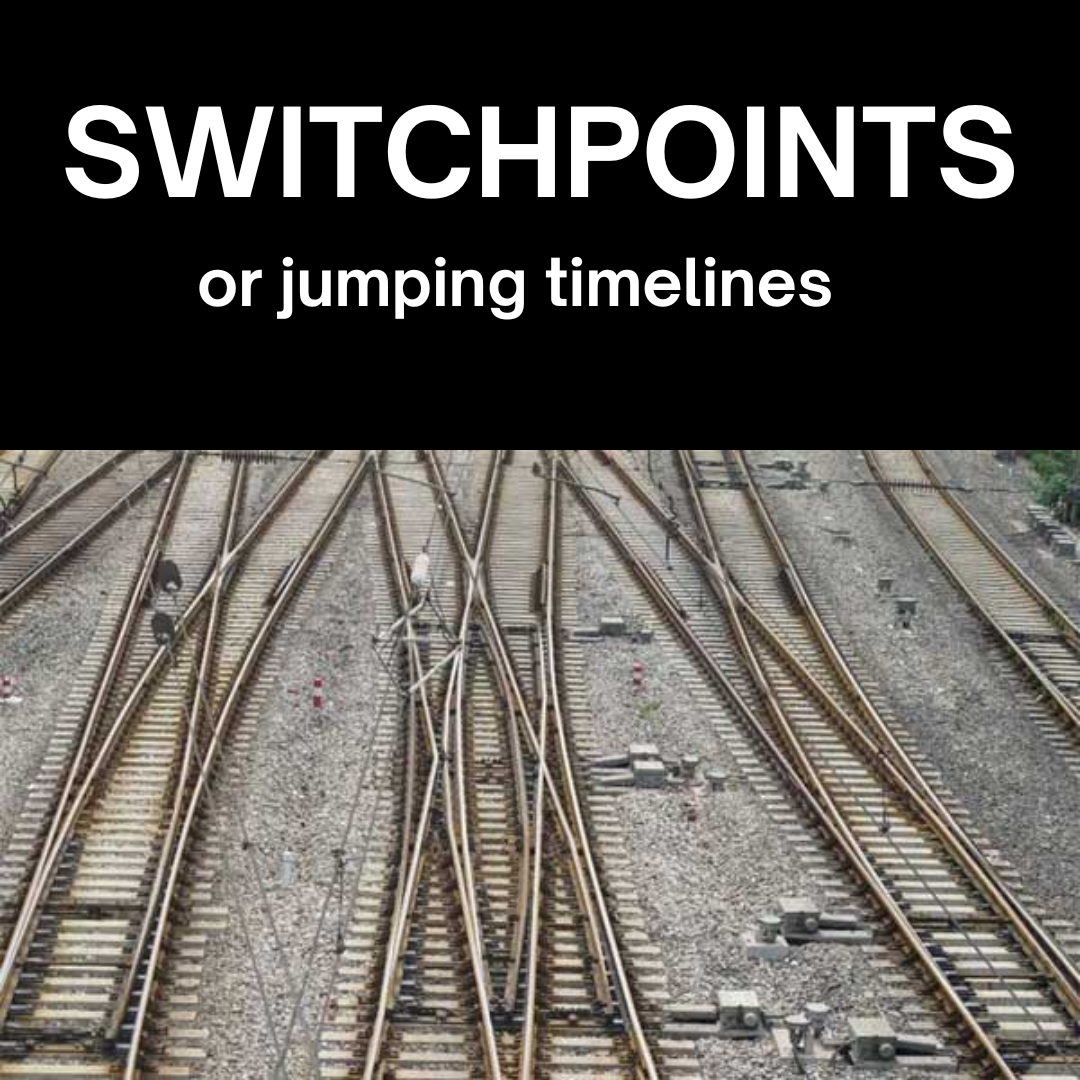
There are moments when you feel the timeline jump. You are sitting there and there is a breach, a punch in the gut—breathless. Then the whole world reconfigures around something new that has jutted into this reality.
These can be bad personal moments, shocks like an unexpected breakup, a sudden death, a frightful diagnosis. Life will never be the same, and yet in your head you know it didn’t have to be this way. Your desire wants to trace back to a moment in time where the tracks shifted, where you went right instead of left, where you said the wrong thing, where a mutant cell or genetic shift or autoimmune reaction took hold. But now you live in the after. Surely there was a before, where there could have been some control, or if no control, at least another destiny. A desire overwhelms you to stay in that moment right before, never knowing what is to come. We only get to see these switchpoints in retrospect, when the sense of inescapable fate falls in, and we know ourselves now to be impotent to reverse the change.
These can also be good collective moments, like waking up to the news that a CEO was gunned down and the hero who did it was eluding capture. The immaterial fact of a what if lies beneath the idea of the propaganda of the deed: an act that accomplishes more than the deed itself, but opens new possibilities moving forward, if there are others to pursue that timeline.
When the news came out that Trump caught COVID, there was a possible timeline in which he died. We celebrated the possibility—and we were disappointed. Those early COVID days seemed often to conjure other possibilities that didn’t or couldn’t (yet) materialize, like rent strikes. But then, unexpectedly, though with precedent, the streets erupted into the George Floyd uprising and opened many different timelines. The action in the street, the sheer mass of it, the overcoming of police, the spread of abolitionist discourse presented futures we had been waiting for: tipping on the edge of a precipice, if we could only fall the right direction. The transformation did not find purchase in whatever shared reality you reading this and I writing this cohabit, not in the way we wanted. But the burning of the third police precinct in Minneapolis allowed a desired timeline to momentarily align with ours. And the image and fact of that burning remains as a harbinger of possibility.
Echoes of that timeline still remain in the unconscious of those who participated or witnessed such altering events. There was the Great Resignation, where, after the lockdowns and the uprising, people refused to go back to shitty jobs. Another echo resounded after October 7, though with less ferocity, until the student encampments: there the experienced autonomy and mutual world-making sparked for a moment, before being undermined by administration and bureaucracy. Perhaps we each unconsciously contain a mini-portal in us that, under the right conjunction of circumstances, place and time and other people, can rip open the timeline, or reattach to the one where . . . we took over a city, multiple cities, drove out police and the rulers withdrew. How do we open that door and step through?
I bring up the unconscious because my mind is drawn to one way Freud discussed the use of language in telling a dream and how the analyst could interpret it. In his Dora case (which is a whole other problem), he describes the ambiguity in this way:
Now, in a line of associations ambiguous words (or, as we may call them, ‘switchwords’) act like points at a junction. If the points are switched across from the position in which they appear to lie in the dream, then we find ourselves on another set of rails; and along this second track run the thoughts which we are in search of but which still lie concealed behind the dream.
I’m going to read this violently, to shift tracks away from Freud’s context, though one can see that the “hysterical” patient is crying out another reality against the bourgeois world she suffers in. Freud imagines it is the power of an interpreter to effect the switch by listening with another ear. But what if we stay in the dream, stay with the desire. I don’t want to interpret it away into a prescription to conform our behavior, but preserve the altered logic that lets two different things crash into each other, where there is a layered reality constantly running. Dreams aren’t always good, and of course we don’t control them—but they are a constantly experienced other world that juts into this one.
Freud said these dreams operated on the unconscious logic of desire: a wish fulfillment. Something disallowed in waking life gets realized in the dream—but is masked so that the mind can tolerate it. It’s a nightly experience of timelines jumping. What if I could . . . ? If I could only . . . ? These what if’s crop up constantly in our waking lives, and we don’t have to swat them away like unrealistic flies buzzing daydreams against the windows of reality. We don’t have to settle for what is. I want to be the person who effects the switch, who is at the ready for the right word, the right moment, the right jumbling of people, to realize a desire that, contra Freud, cannot be sublimated into upholding this disastrous civilization.
These what if’s aren’t just our individual desires, they are spiritual intrusions that contradict the reality we are made to accept. But so often our desires are reined in by the contours of that reality beaten into us from our youngest moments. We cannot even conceive those true desires crying out undercover of the language and symbols of daily life, an undercurrent that joins our voices into a chorus of ages, a neverending now yearning for the day before. Our supposed desires stay limited to describing what is and isn’t possible, such that the positive ruptures of reality seem so unexpected that they are otherworldly.
We can see this in the dystopian confirmation that we feel when the bad things get worse in precisely the ways we have predicted. “Oh yeah, LA is in flames?” “Oh yeah, Western North Carolina was wiped out by a storm?” “Oh yeah, Trump got re-elected and is appointing a cabinet of sexual assaulters?” “Oh yeah, they made it illegal to sleep on the streets, to get an abortion, to transition?” and so on. The tracks of confirmed reality run on into the horizon—the linear timeline that determines that we live in a fallen realm and redemption will only come after.
Just as we have to walk the line between the actions that remain unspoken and those that come into the light to bring us together, we can walk the line of these two realities, trying to balance on the fulcrum of before and after. Can we live in that one moment that opens up all possibilities without closing us off into the timeline of further suffering and death? Can we jump timelines and find a track that leads to where we want to go? It is on this precipice that we find the possibility of action, if we allow the timeless desires to bubble up and speak through us, permitting our bodies unforeseen gestures that are yet very old, where the immaterial and material collide in the switchpoint of a circular dance, where we already know what we are doing.
